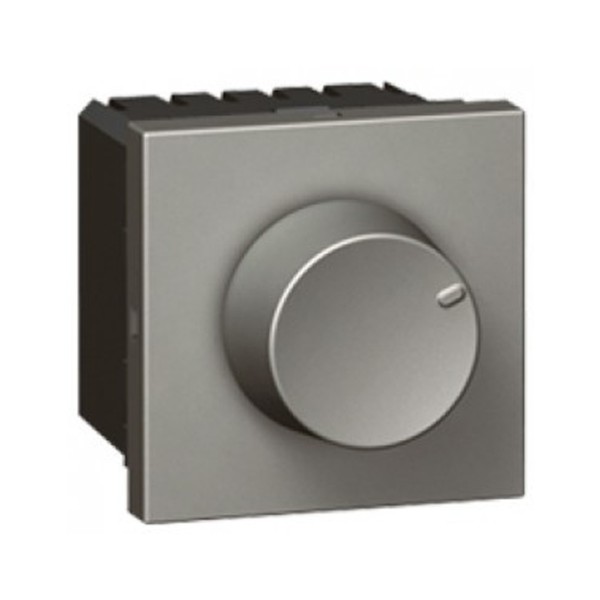In today’s world of smart homes and energy efficiency, lighting plays a crucial role in creating ambiance and functionality. One of the most effective ways to achieve the perfect lighting is through the use of dimmers, particularly LED dimmer controllers. These devices not only enhance the aesthetic appeal of your space but also contribute to energy savings and extend the lifespan of your LED bulbs. In this blog, we will explore the significance of dimmers, the working principles of LED dimmer controllers, their benefits, and how to choose the right one for your home.
What is a Dimmer?
A dimmer is a device that adjusts the brightness of a light source, allowing you to create the desired atmosphere for any occasion. Whether you want bright lighting for cooking or a soft glow for movie night, a dimmer gives you the flexibility to control the intensity of your lights. Traditional dimmers were primarily designed for incandescent bulbs, but with the advancement of technology, LED dimmer controllers have emerged as a popular choice for modern lighting solutions.
The Rise of LED Dimmer Controllers
With the increasing popularity of LED lighting, the need for compatible dimming solutions has grown. LED bulbs are more energy-efficient than traditional incandescent bulbs, but they require specific dimmer controllers to function correctly. LED dimmer controllers are designed to manage the unique characteristics of LED lighting, ensuring smooth dimming performance without flickering or buzzing.
How LED Dimmer Controllers Work
LED dimmer controllers work by adjusting the amount of voltage delivered to the LED bulbs. Unlike incandescent bulbs, which simply get dimmer as voltage decreases, LEDs require a more sophisticated approach. The LED dimmer controller uses a technique called phase-cut dimming, which can be categorized into two types: forward phase-cut (TRIAC) and reverse phase-cut (ELV).
- Forward Phase-Cut Dimming (TRIAC): This method is commonly used in traditional dimmers. It cuts off the leading edge of the AC waveform, reducing the voltage reaching the LED. While effective, this approach can cause flickering in some LED bulbs.
- Reverse Phase-Cut Dimming (ELV): This method cuts off the trailing edge of the AC waveform. It is generally more compatible with LED bulbs, providing smoother dimming and reducing flickering.
Benefits of Using LED Dimmer Controllers
- Energy Efficiency: One of the primary advantages of using dimmers is energy savings. By reducing the brightness of your lights when full brightness is unnecessary, you can significantly decrease energy consumption. LED dimmer controllers allow you to fine-tune your lighting, maximizing energy efficiency without sacrificing brightness when you need it.
- Extended Lifespan of LED Bulbs: Dimming your LED lights can extend their lifespan. Running LED bulbs at lower wattages reduces heat output, which is one of the primary factors that can lead to early failure. LED dimmer controllers help maintain optimal performance, contributing to the longevity of your lighting fixtures.
- Enhanced Ambiance: Lighting sets the mood in any space. Whether it’s a romantic dinner, a cozy family gathering, or a productive workspace, the ability to adjust the brightness with LED dimmer controllers allows you to create the perfect ambiance for every occasion.
- Improved Aesthetics: With LED dimmer controllers, you can highlight specific features in your home, such as artwork, architectural details, or outdoor spaces. By strategically dimming lights, you can draw attention to what matters most, enhancing the overall aesthetic appeal of your environment.
Choosing the Right LED Dimmer Controller
When selecting an LED dimmer controller for your home, consider the following factors:
- Compatibility: Ensure that the dimmer is compatible with the specific LED bulbs you plan to use. Not all dimmers work seamlessly with all types of LED lights. Check the manufacturer’s specifications and look for products labeled as “LED compatible.”
- Wattage Capacity: LED dimmer controllers come with specific wattage ratings. Calculate the total wattage of the LED bulbs you intend to use to ensure the dimmer can handle the load. It’s generally recommended to choose a dimmer with a higher wattage rating than the total load to avoid overloading.
- Dimming Range: Some LED dimmer controllers offer a broader dimming range than others. If you want the flexibility to dim lights to very low levels, look for a controller that provides a smooth and wide dimming range.
- Installation: Consider the ease of installation. Some LED dimmer controllers are designed for DIY installation, while others may require professional assistance. Ensure that you are comfortable with the installation process or hire a qualified electrician if needed.
- Brand Reputation: Opt for reputable brands known for their quality and reliability. Schneider Electric, for example, offers a range of LED dimmer controllers that meet high standards of performance and safety.
Conclusion
Incorporating LED dimmer controllers into your lighting design can significantly enhance your overall experience at home. From energy savings to creating the perfect ambiance, these devices are essential for modern living. When choosing a dimmer, consider factors like compatibility, wattage capacity, and brand reputation to ensure you make the best choice for your needs.
For high-quality LED dimmer controllers, visit Schneider Electric eShop, where you can find a variety of reliable options tailored to your lighting needs. Embrace the versatility of dimming and transform your living spaces into areas that reflect your personal style and preferences.


